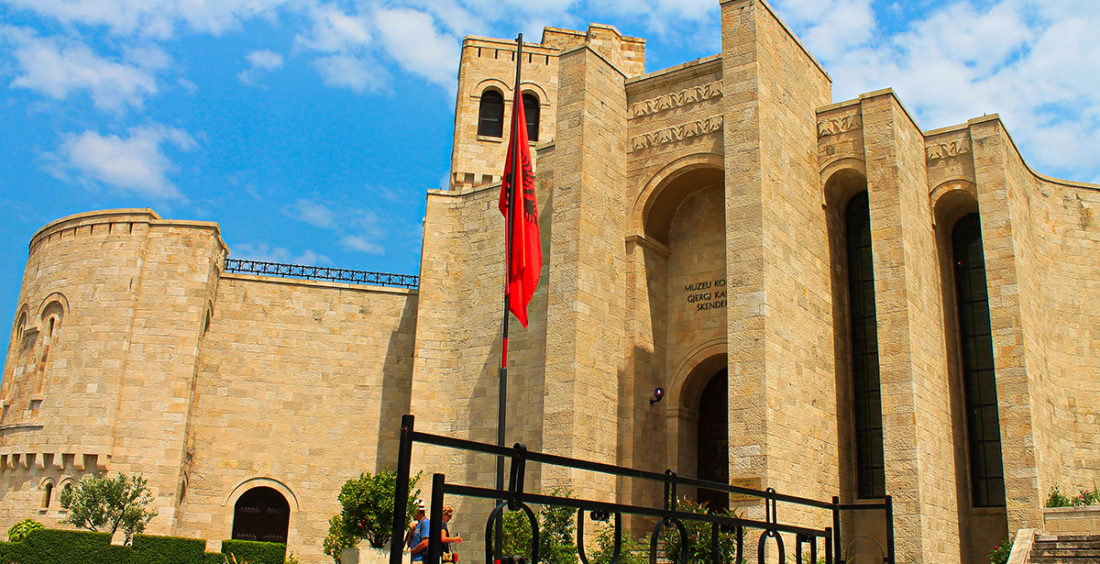The National Museum “Gjergj Kastrioti Skanderbeg” was inaugurated on November 1, 1982. This museum is located in the famous Krujë Castle, the capital of the Arbërit state and a symbol of the defeat of the Turkish armies three times in the 15th century. The museum is designed as a memorial, where the architecture harmonizes with medieval history and art.
For its content, architects worked alongside a team of historians led by Kristo Frashëri and a group of painters led by Bashkim Ahmeti. The museum showcases numerous objects, documents, and original bibliographies, as well as authentic reproductions that clearly narrate the history of the Albanian people in the 15th century and beyond. The museum includes several pavilions such as the Antiquity and Early Medieval Pavilion, the Albanian Principalities Pavilion, the Ottoman Occupation and Resistance Pavilion, the Medieval Castles Pavilion, the Albanian Resistance Pavilion, Skanderbeg’s Chancellery, the Library, the Princes’ Hall, the Pinacotheca, and finally, the Heritage and Echo Pavilion.
The museum presents the dynamics of the Albanian principalities’ life chronologically, through objects made of ceramics, bronze, iron, and copper, original icons, weapons of the time, and even a bell from 1462. The frescoes on the museum’s walls are inspired by Byzantine art and feature romantic depictions from Skanderbeg’s return to Krujë to the glorification of the unification of the principalities. The Skanderbeg Museum is equipped with guides in Albanian and English, providing significant insight into the Albanian hero, whose figure has become part of well-known bibliographies worldwide and has inspired Albanian artists.











 Rruga e Elbasanit, Pallati nr. 111,
Rruga e Elbasanit, Pallati nr. 111,